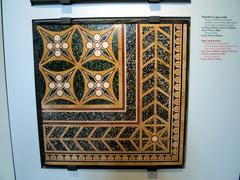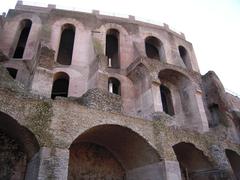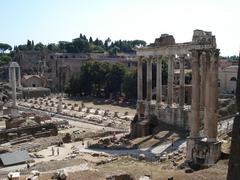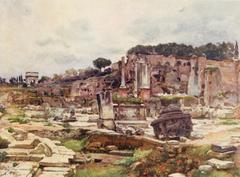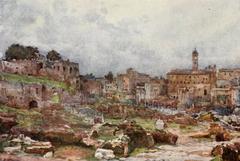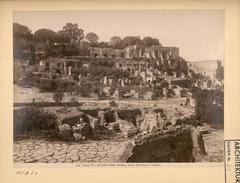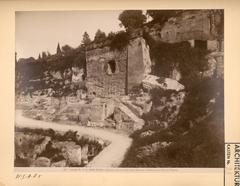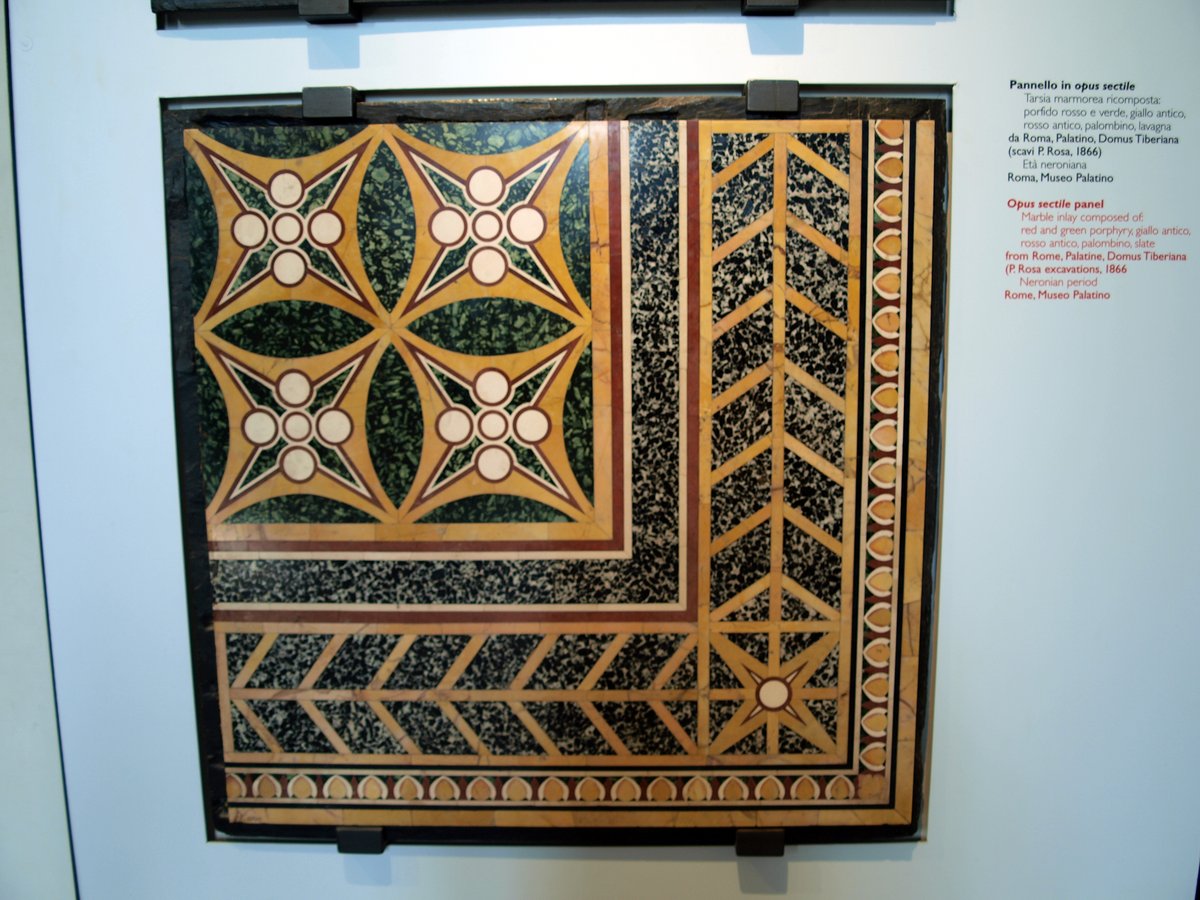
Domus Tiberiana Visiting Hours, Tickets, and Rome Historical Sites Guide
Date: 14/06/2025
Introduction to Domus Tiberiana
The Domus Tiberiana, perched on the northwest slope of Rome’s Palatine Hill, is one of the earliest and most significant imperial residences of ancient Rome. Named after Emperor Tiberius (14–37 CE), the palace complex was more than a private residence; it was a symbol of imperial authority, strategically placed at Rome’s legendary birthplace. Over centuries, successive emperors including Caligula, Nero, Domitian, and Hadrian expanded and transformed the palace, shaping its role in governance and ceremony.
Today, after centuries of neglect and decades of closure, the Domus Tiberiana welcomes visitors once more, thanks to recent comprehensive restoration. Its reopening in September 2023 reestablishes a crucial link between the Roman Forum and Palatine Hill, unveiling a wealth of artifacts and immersive multimedia experiences that illuminate Rome’s imperial past (Ancient Rome Live, Italian Traditions, Italian Art Ventures, Romeing).
This guide provides authoritative and practical information on Domus Tiberiana’s history, visiting hours, ticketing, accessibility, and what to expect, ensuring visitors can make the most of their journey into Rome’s imperial heritage.
Table of Contents
- Introduction
- History and Significance
- Architecture and Archaeology
- Visiting Information
- Exhibitions and Recent Discoveries
- Nearby Attractions
- Frequently Asked Questions (FAQ)
- Conclusion and Visitor Resources
History and Significance
Foundations and Evolution
Constructed during the reign of Tiberius, the Domus Tiberiana set the template for subsequent imperial palaces, integrating private apartments, administrative spaces, ceremonial halls, and gardens. Its placement on the Palatine Hill honored Rome’s legendary founding and its transformation from elite residential zone to the emperors’ exclusive domain (Ancient Rome Live, Italian Art Ventures).
Subsequent rulers—Caligula, Nero, Domitian, and Hadrian—expanded and enhanced the palace. Caligula extended it toward the Roman Forum, boosting its prominence. Nero made major architectural contributions, integrating the palace with his Domus Aurea and expanding the cryptoporticus. Domitian rebuilt and further monumentalized the palace after the fire of 80 CE, constructing the famous Ramp of Domitian, while Hadrian added substructures and terraces (Italian Traditions).
Later History and Rediscovery
The palace continued as an imperial residence through the Severan dynasty. In late antiquity, it served as papal property, with Pope John VII residing there in the 8th century. Over time, it was abandoned, pillaged for materials, and buried beneath the Farnese Gardens in the Renaissance, preserving much of its structure by accident (Ancient Rome Live, Wikipedia).
Modern archaeological work began in the 19th century, but the site was closed in the 1970s for safety reasons. After meticulous restoration, it reopened in 2023, allowing public access for the first time in nearly five decades (AP News).
Architecture and Archaeology
Layout and Features
Covering more than four hectares, the Domus Tiberiana was a vast and elaborate complex featuring:
- Private imperial apartments with lavish decorations.
- Gardens (horti), including the later Horti Farnesiani.
- Places of worship and shrines.
- Praetorian guard quarters.
- Administrative and service areas for palace management.
- Commercial spaces integrated into the urban context (Italian Traditions).
Architectural highlights include monumental arcaded substructures supporting the northern slope, a grand vestibule at Forum level, ceremonial ramps, extensive halls, mosaic floors, and surviving frescoes (AP News, Wikipedia).
Recent Archaeological Discoveries
Excavations have revealed well-preserved rooms, ancient pavements, a 13th-century family grave, a hoard of 7th-century coins, and a 4th-century oil lamp. Many of these finds are now displayed in the on-site exhibition (Wanted in Rome).
Visiting Information
Hours, Tickets, and Access
- Location: Northwest Palatine Hill, Via della Salara Vecchia 5/6, within the Colosseum Archaeological Park (The Geographical Cure).
- Opening Hours: Generally Tuesday–Sunday, 9:30 am–3:30 pm (last entry 3:00 pm). Closed on Mondays and public holidays. Hours may vary; check the official site.
- Tickets: Entry is via the “SUPER” ticket, granting access to Domus Tiberiana and other exclusive Roman Forum and Palatine sites. Prices: approx. €18 for the SUPER ticket, or €4 add-on if you already have a site ticket (CoopCulture, CoopCulture). Advance online booking is strongly recommended.
Accessibility
- Physical Access: The site features uneven terrain, stairs, and ancient pavements. Wheelchair access is limited; tactile paths and multimedia installations offer alternative engagement (Romeing).
- Facilities: Restrooms are available in the Colosseum Archaeological Park, but amenities are limited within Domus Tiberiana itself. Bring water, especially in summer (Wanderlog).
The Visitor Experience
Route and Exhibition
Visitors follow a historical route beginning at Clivio della Vittoria, through the Domitian Ramp and Farnese Gardens, restoring the connection between the Roman Forum and Palatine Hill (Wanted in Rome). The “Imago Imperii” exhibition, set across thirteen rooms, showcases the palace’s history with artifacts like coins, statues, marble fragments, and terracotta, complemented by interpretive panels in Italian and English (Romeing, The Geographical Cure).
Two multimedia rooms offer a documentary on the palace’s restoration and a holographic reconstruction. A tactile path and accessible features enhance inclusivity.
Highlights and Views
- Architectural Marvels: Explore remains of the Bridge of Caligula, imperial baths, and frescoed interiors.
- Panoramic Terraces: Take in sweeping views over the Roman Forum, perfect for photography (Wanted in Rome).
Tips for Visitors
- Book tickets in advance to secure entry.
- Arrive early to avoid crowds and for the best lighting.
- Wear sturdy shoes and bring sun protection.
- Photography is permitted but tripods may require special permission.
- Allow at least 1.5–2 hours to fully experience the site.
Nearby Attractions
- Roman Forum: Adjacent, offering a window into public life in ancient Rome.
- Palatine Hill: Explore further imperial residences and the Palatine Museum.
- Capitoline Museums: A short walk away, with extensive collections of Roman artifacts.
Frequently Asked Questions (FAQ)
Q: How can I buy tickets for Domus Tiberiana?
A: Purchase the “SUPER” ticket online at the CoopCulture website, or at park ticket offices.
Q: What are the Domus Tiberiana visiting hours?
A: Generally Tuesday–Sunday, 9:30 am–3:30 pm (last entry 3:00 pm). Check for seasonal changes.
Q: Is the site accessible for people with disabilities?
A: Accessibility is limited due to ancient terrain. Tactile paths and multimedia features provide alternative experiences.
Q: Are guided tours available?
A: Yes, expert-led tours in multiple languages can be booked in advance.
Q: Can I take photos inside the Domus Tiberiana?
A: Yes, non-flash photography is allowed throughout the site.
Conclusion and Visitor Resources
The Domus Tiberiana stands as a remarkable testament to Rome’s imperial legacy, offering visitors a rare opportunity to walk in the footsteps of emperors and experience the grandeur of ancient architecture. The recent restoration and reopening have revitalized this historic palace, making it a must-see destination for anyone interested in Rome’s past.
For the best experience:
- Secure your “SUPER” ticket online;
- Plan for accessibility needs;
- Consider a guided or audio tour;
- Allow time to explore nearby sites on the Palatine Hill.
Download the Audiala app for expert-guided audio tours and maps, and follow us on social media for updates and insider tips on Rome’s archaeological treasures.
References
- Ancient Rome Live
- Italian Traditions
- Italian Art Ventures
- Romeing
- The Geographical Cure
- Wanted in Rome
- CoopCulture
- Through Eternity
- AP News
- Wikipedia
- Wanderlog
- RomeWise
- Turismo Roma
